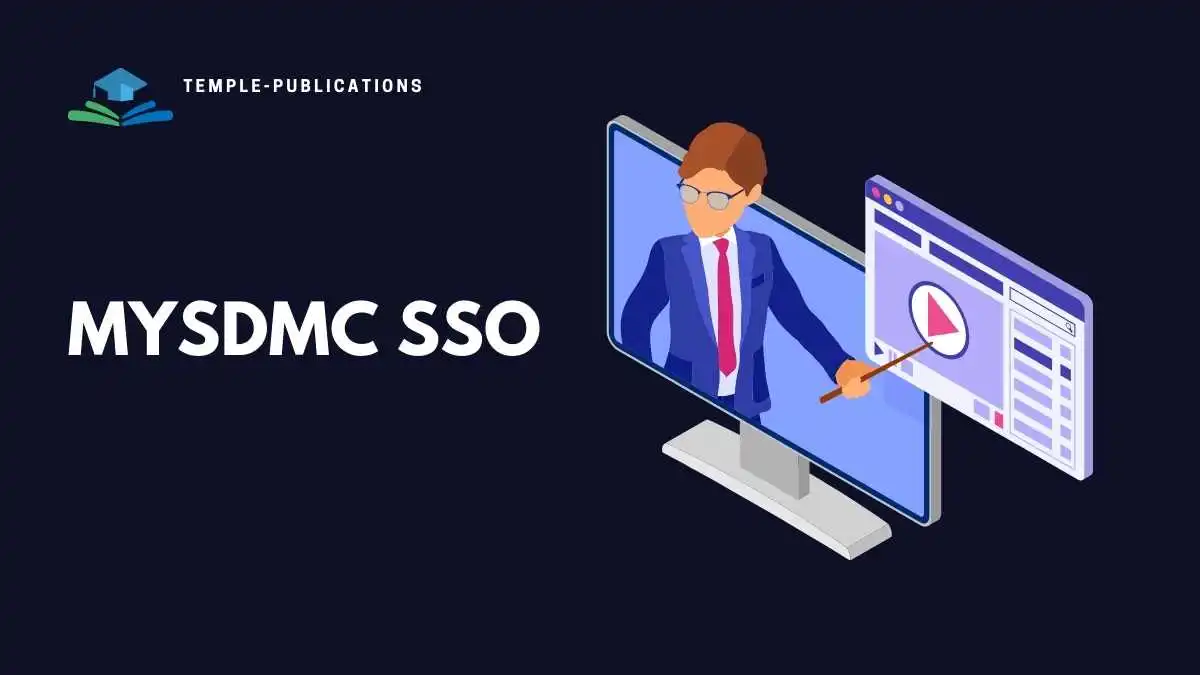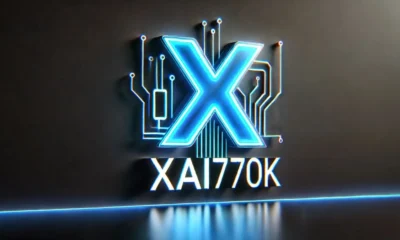TECHNOLOGY
Quick and Easy: Step-by-Step Access to MySDMC SSO

The MySDMC SSO portal offers a streamlined solution for the School District of Manatee County, combining multiple educational resources into one convenient login. With this single sign-on system, students, teachers, parents, and staff only need to log in once to access a suite of essential tools. Applications like Microsoft Teams, Clever, Google Workspace, and the Focus Parent Portal are all accessible through this user-friendly interface. By reducing login times and simplifying navigation, it saves time, enhances productivity, and makes it easier for the whole school community to stay connected and organized.
Logging into MySDMC SSO
- Visit the MySDMC SSO Portal: Go to the official website to start your login.
- Enter SDMC Credentials: Use your SDMC-assigned username and password.
- Access Your Dashboard: Once logged in, you’ll reach the dashboard with all your educational tools and resources.
- Forgot Password?: If needed, use the password recovery option for a quick reset.
- Enjoy Centralized Access: With just one login, students, teachers, and parents have instant access to essential resources, making it ideal for efficient, busy school days.
Exploring the MySDMC SSO Dashboard
The dashboard is designed to be intuitive and visually organized, making it easy for users to access frequently used applications. The homepage displays shortcuts to popular tools like Microsoft Teams and Google Classroom, ensuring quick transitions between assignments, collaboration tools, and other resources. Users can also customize the dashboard layout to prioritize the applications they use most. This feature minimizes distractions and keeps essential resources front and center, making digital learning more efficient. It’s dashboard layout allows students and teachers to navigate their digital learning environment easily.

Integrated Apps
It integrates multiple educational tools, consolidating them into one platform for easy access. Essential applications like Microsoft Teams, Google Workspace, and Clever are all available in the portal, with the Focus Parent Portal providing additional resources for parents. By housing these resources within a single sign-on system, It reduces login friction and makes transitions between tools smooth and efficient. This centralized access allows students, teachers, and parents to move quickly between applications, keeping everyone focused on their educational responsibilities without the hassle of multiple logins.
Top Benefits of Using MySDMC SSO
- Single Login Access: Streamlines logins by providing access to all school resources with one login.
- Seamless Transitions: Enables easy switching between tools like Microsoft Teams, Clever, and Google Workspace.
- Enhanced Parental Involvement: Allows parents to monitor attendance, grades, and progress in one place.
- User-Friendly Design: Reduces login errors and provides an intuitive experience across devices.
- Time-Saving Efficiency: Minimizes time spent on logins, increasing focus on learning and productivity.
- Centralized Access: Brings all essential tools into one platform, enhancing collaboration and academic success.
MySDMC SSO for Microsoft Teams Collaboration
Students and teachers gain instant access to Microsoft Teams without needing additional logins. This integration provides a seamless environment for classroom discussions, virtual meetings, and collaboration on assignments. Teachers can organize classes, assign resources, and connect with students in real time, while students benefit from instant access to learning materials and discussions. By providing an easy entry into Microsoft Teams, It supports both remote and in-person learning, ensuring that everyone can stay connected, communicate effectively, and make the most of their digital education tools.
Access to Clever through MySDMC SSO
Clever, a widely used educational tool, is available directly through it. Students can easily access digital textbooks, educational games, and online courses, creating a more engaging learning experience. For teachers, Clever allows for streamlined assignment sharing and monitoring of student progress. By consolidating Clever within this platform, students can access all of their resources without needing to navigate multiple screens. This integration ensures students have quick access to digital learning materials, making it easier for them to focus on their studies and for teachers to provide effective learning resources.

To further enhance the recording experience of learning and work, Custom Pens can be provided for school teachers and students. The school logo and motto can be printed on the pen body, which not only highlights the characteristics of the school but also deepens students’ recognition of the school’s cultural heritage and educational philosophy.
You can also engrave the student’s name, student number, learning goals, or teacher-student messages. At the same time, to consider the students’ usage habits and comfort, the ergonomic design is adopted to make the pen body arc fit the finger contour, which can make students more comfortable when taking class notes and completing homework, and teachers more comfortable when marking test papers and preparing lessons.
Google Workspace: Your Tools Unified
Google Workspace integrates seamlessly into MySDMC SSO, providing easy access to tools like Google Drive, Docs, Sheets, and Classroom. This means that students and teachers can manage assignments, collaborate on projects, and organize resources with one login. For teachers, Google Classroom allows them to assign tasks and track student progress effectively. With all of these tools in one place, streamlines workflows, making it easy for students to stay organized and productive. This integration supports efficient, collaborative learning and helps students keep track of their academic responsibilities with ease.
Engaging Parents with the Focus Portal
The Focus Parent Portal is a crucial feature of MySDMC SSO, keeping parents engaged in their child’s educational experience. This tool allows parents to monitor attendance, view grades, track academic progress, and communicate directly with teachers. With this easy access, parents can stay informed about their child’s school life and provide additional support when needed. The Focus Parent Portal simplifies parental involvement by consolidating all information into one secure platform, making it easier for parents to stay involved and contribute to their child’s learning journey in meaningful ways.

Accessibility
MySDMC SSO is designed with accessibility in mind, ensuring all students, including those with disabilities, can benefit from its features. The platform follows ADA compliance standards, offering compatibility with screen readers, adjustable text sizes, and high-contrast options. This approach makes the platform usable for students with diverse learning needs, promoting inclusivity and equal access. It focus on accessibility helps ensure that all students can engage fully with their learning resources, fostering a digital environment that’s welcoming and supportive for everyone in the school community.
Troubleshooting MySDMC SSO
For users who experience login or access issues, this platform offers a variety of troubleshooting options. Password recovery tools are available for those who have forgotten their credentials, and users can also find guidance on clearing cache or adjusting browser settings for optimal compatibility. If additional help is needed, SDMC’s support team provides reliable assistance to ensure continuous access. By offering these troubleshooting resources, It minimizes disruptions, allowing students, teachers, and parents to resolve issues quickly and maintain access to important educational tools.
Data Security on MySDMC SSO
Security is a priority for this platform, ensuring that user data is protected through robust measures like multi-factor authentication (MFA). This added layer of security helps verify user identities and prevents unauthorized access to sensitive information. The platform also uses encrypted connections to keep data safe during transfers, with regular updates that reinforce the system’s defenses. It’s commitment to security provides a safe digital learning environment, building trust among users by safeguarding their privacy and ensuring a secure experience for students, teachers, and parents alike.
-

 BIOGRAPHY7 months ago
BIOGRAPHY7 months agoBehind the Scenes with Sandra Orlow: An Exclusive Interview
-

 HOME1 year ago
HOME1 year agoDiscovering Insights: A Deep Dive into the //vital-mag.net blog
-

 HOME1 year ago
HOME1 year agoSifangds in Action: Real-Life Applications and Success Stories
-

 BIOGRAPHY1 year ago
BIOGRAPHY1 year agoThe Woman Behind the Comedian: Meet Andrew Santino Wife




























